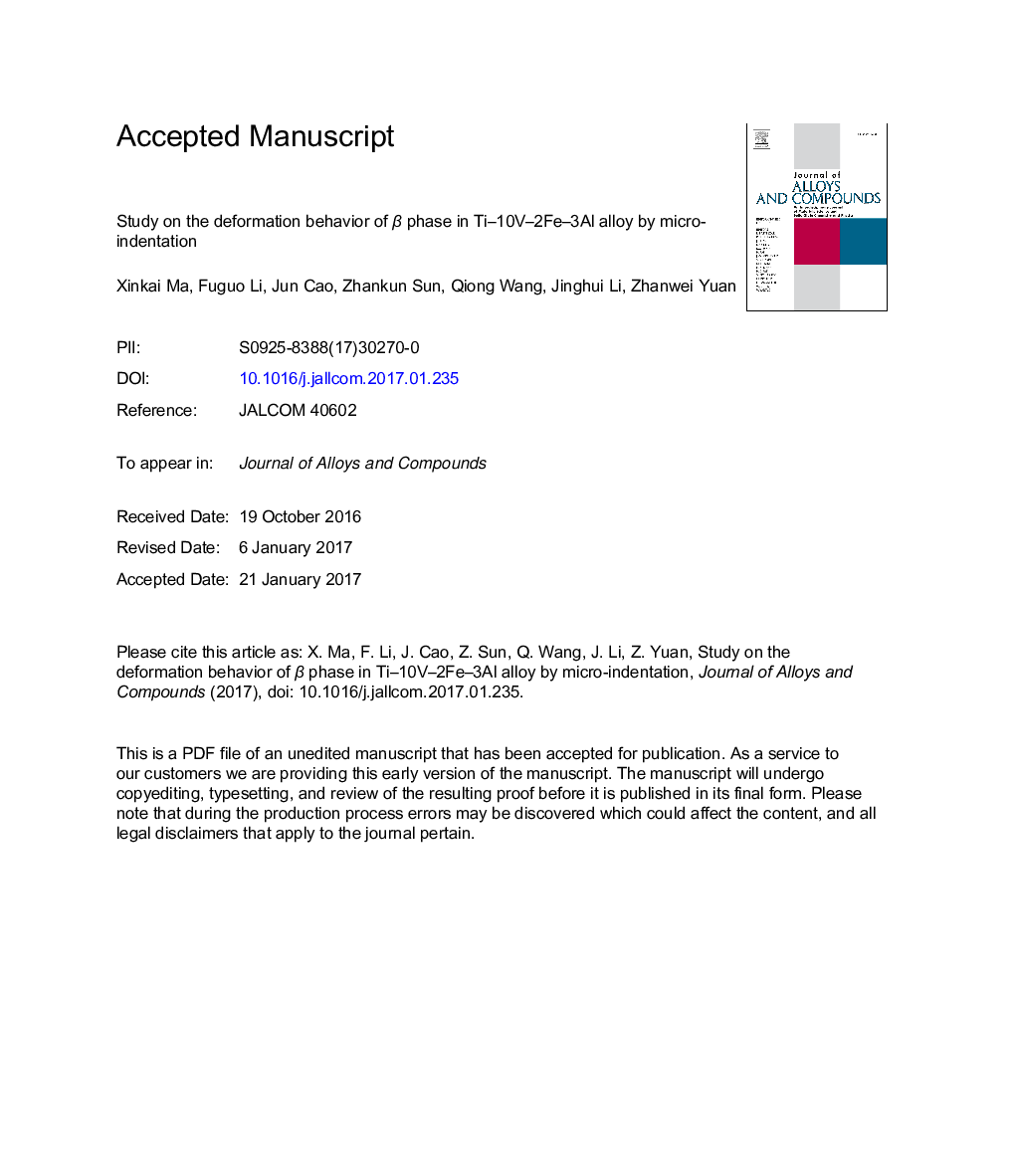| Article ID | Journal | Published Year | Pages | File Type |
|---|---|---|---|---|
| 5460304 | Journal of Alloys and Compounds | 2017 | 23 Pages |
Abstract
The Ti-10V-2Fe-3Al alloy composed of β phases was varied by the β-solution treatment. In order to characterize the indentation deformation behavior of β phase, the micro-indentation tests were conducted in the indenter load ranging from 50 mN to 450 mN and the loading rates range from 4.84 mN/s to 19.36 mN/s at ambient temperature. The influences of β-solution treatment temperature, loading rate and indenter load on the micromechanics properties were investigated. The results showed that both the micro-hardness and Young's modulus of β phase declined drastically with the increase of indenter load, while remained the same level when the indenter load was above 300 mN. It was observed that the specimen under β-solution treatment of 820 °C and the loading rate of 19.36 mN/s possessed a higher micro-hardness and Young's modulus than that of others. The plastic energy dissipation, which was significantly influenced by the β-solution treatment temperature and loading rate, increased with the growth of indenter load exerted on the specimens and can be expressed in a power-law function of indenter load for β phase. In addition, the average plastic energy dissipation density in the micro-indentation was a linear function of the micro-hardness and its decrease with indenter load is attributed to the decline of geometrically necessary dislocations (GNDs).
Related Topics
Physical Sciences and Engineering
Materials Science
Metals and Alloys
Authors
Xinkai Ma, Fuguo Li, Jun Cao, Zhankun Sun, Qiong Wan, Jinghui Li, Zhanwei Yuan,
